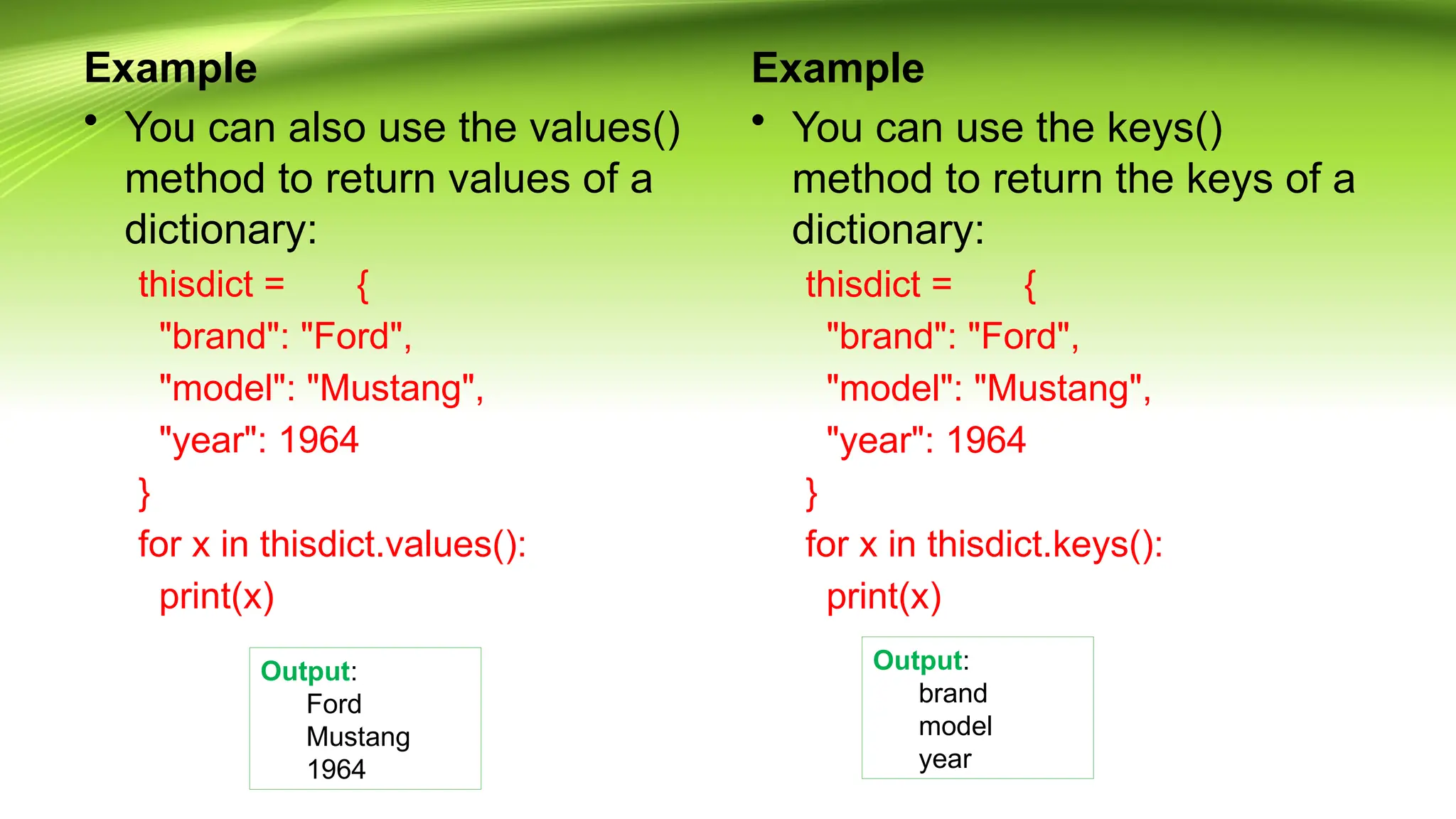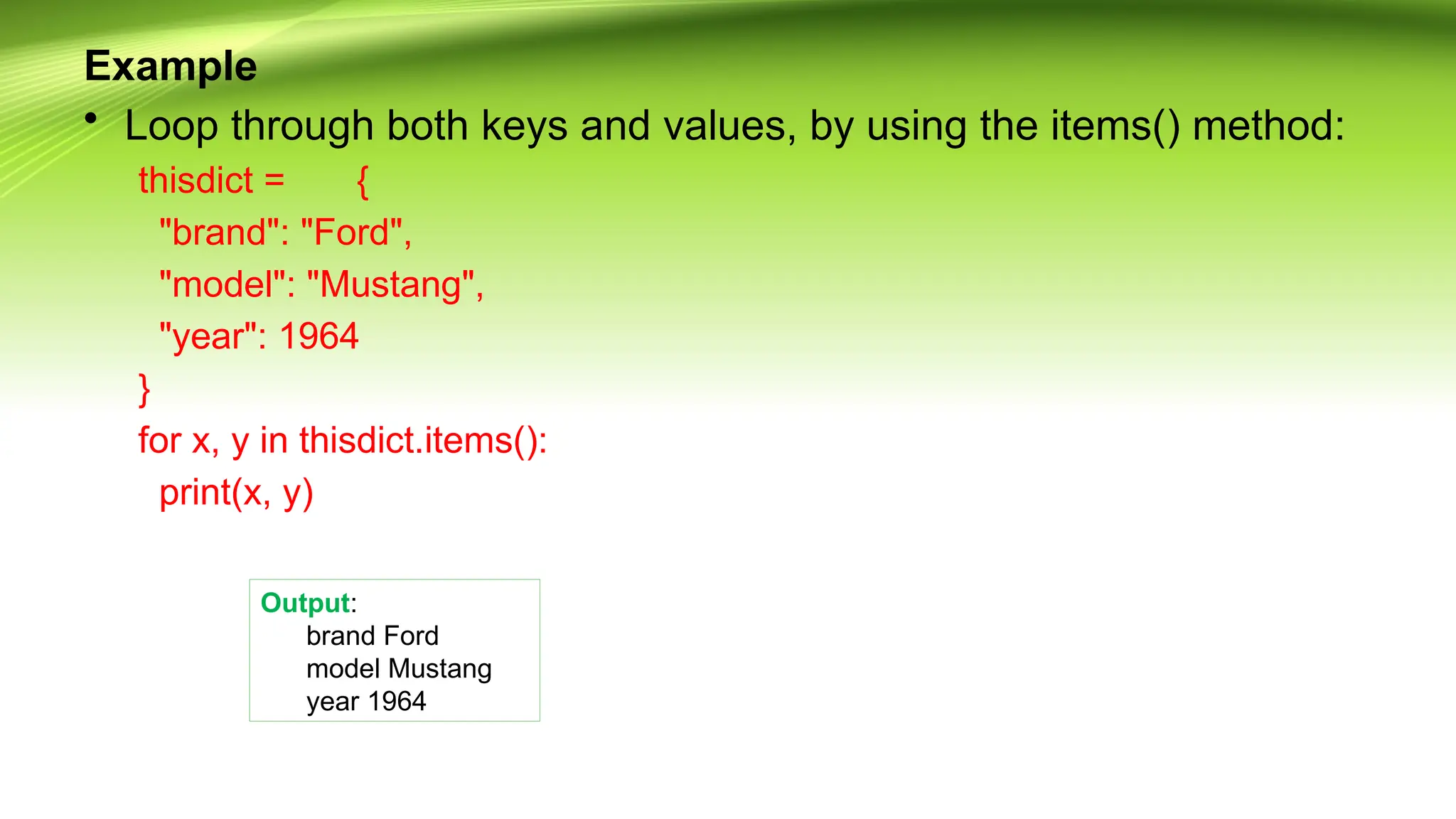This document provides an overview of flow control in Python, focusing on conditional statements such as if, elif, and else, as well as loops like while and for. It explains the use of logical operators (and, or), and highlights the importance of indentation and examples of nested statements. Additionally, it introduces list comprehensions and methods for looping through various data structures like lists, tuples, sets, and dictionaries.

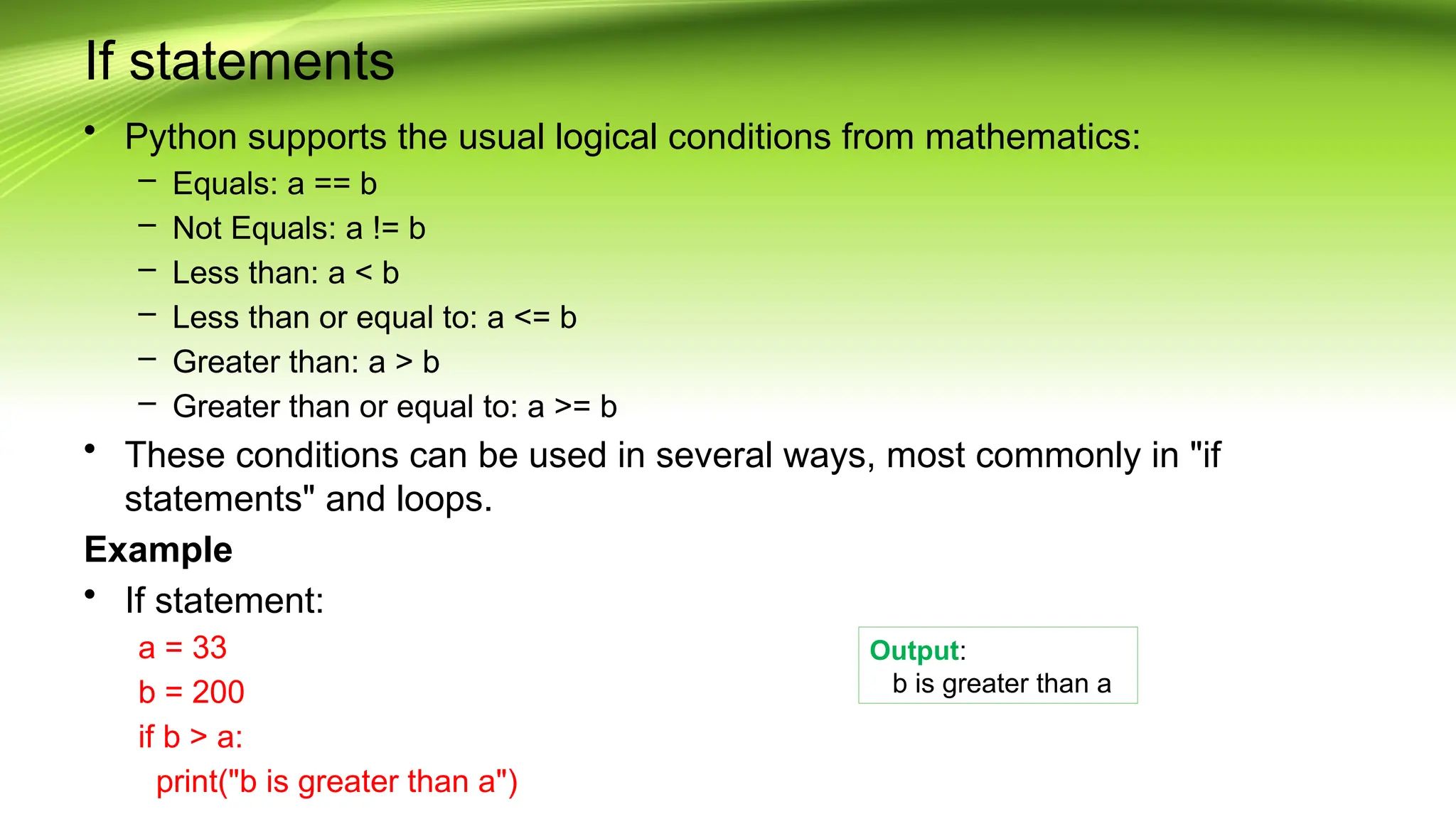
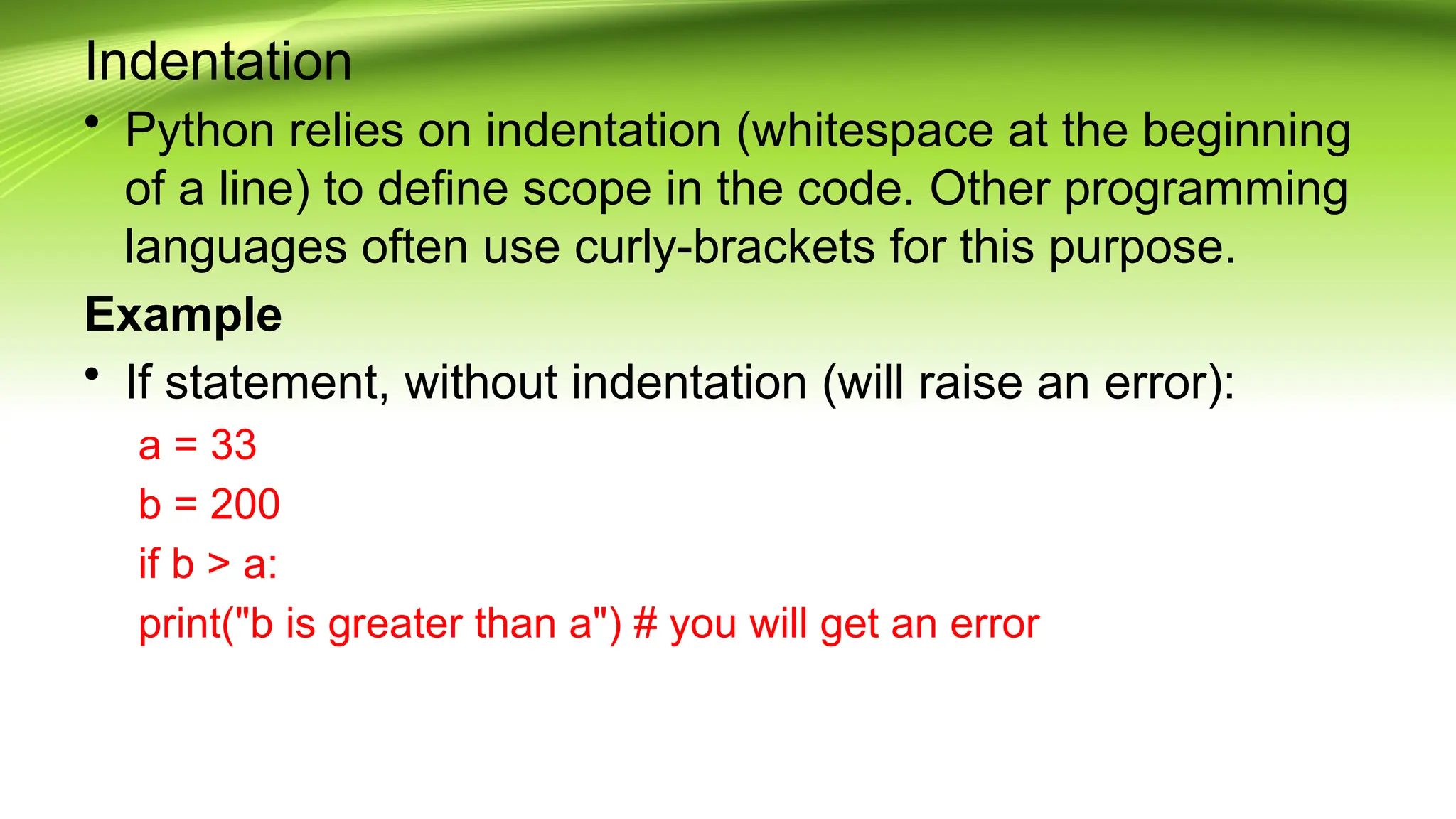
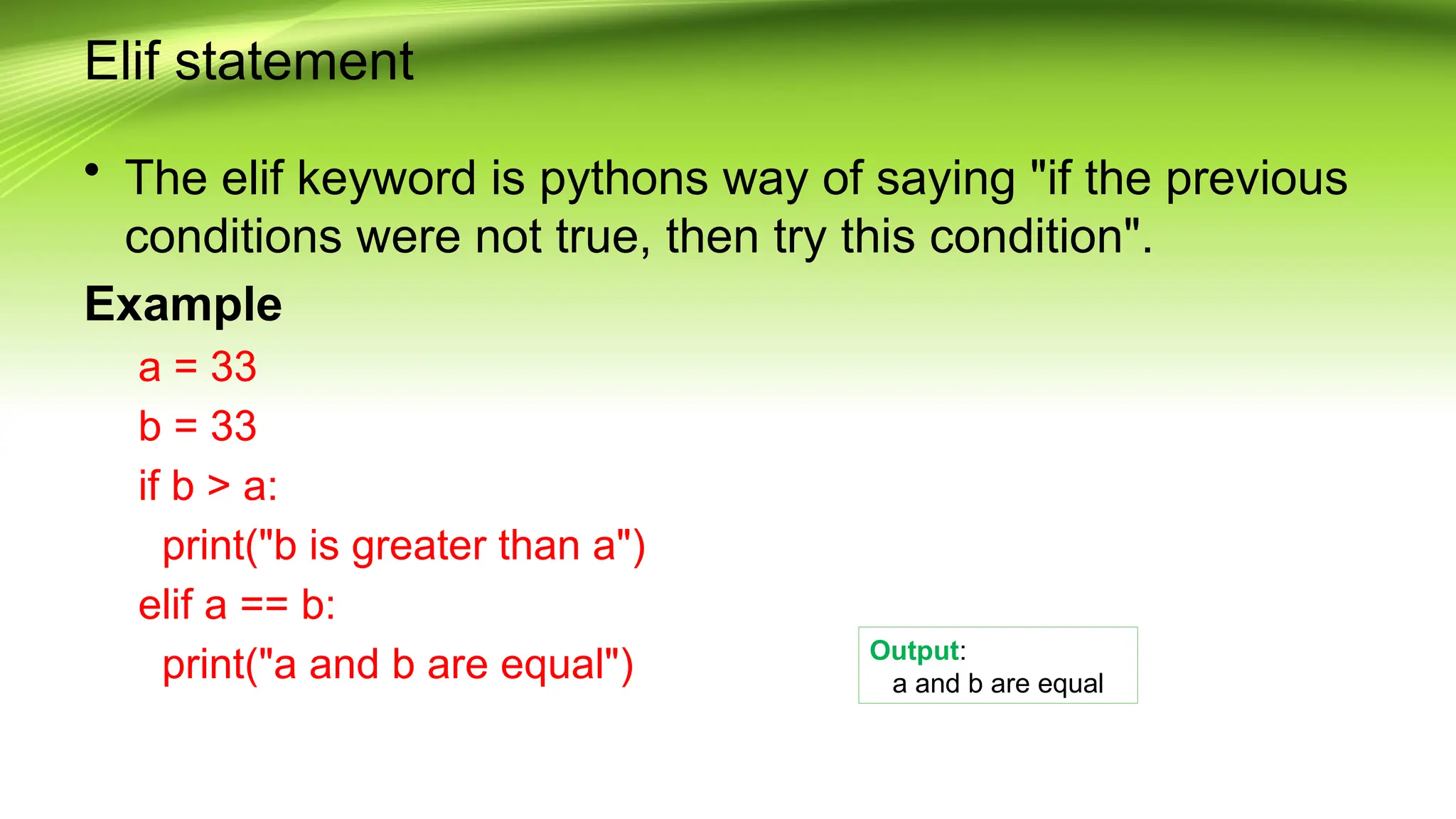
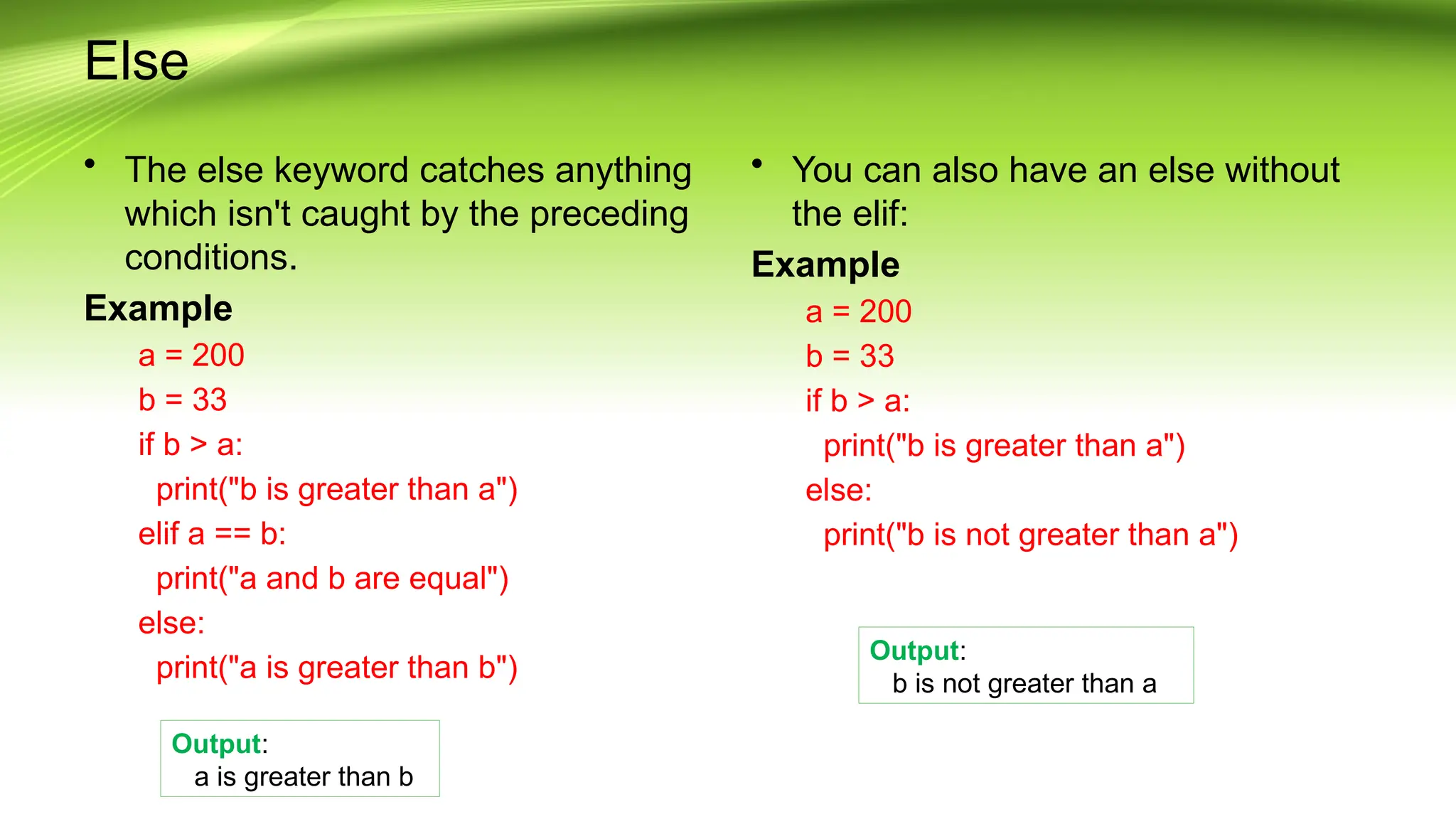
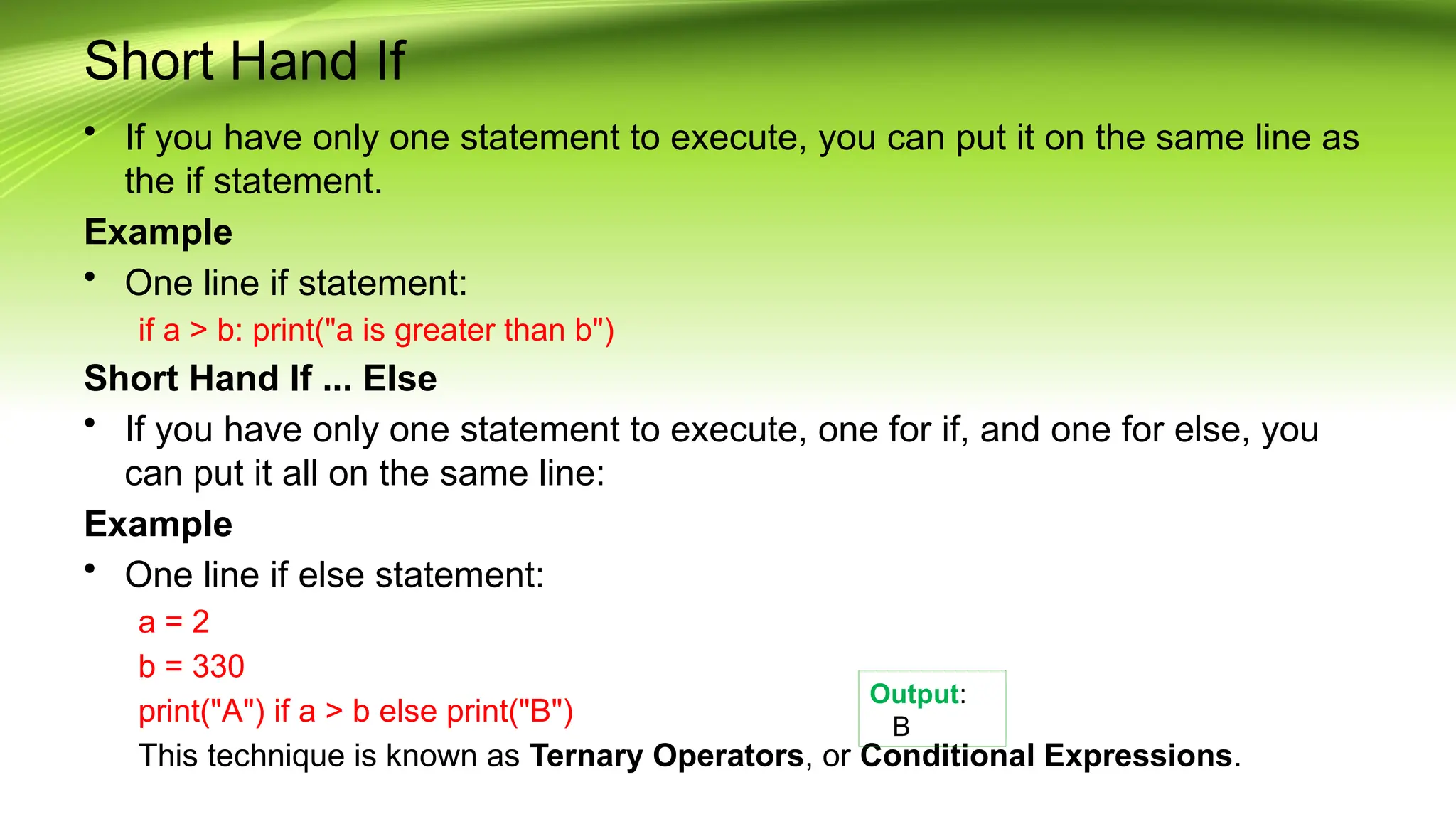
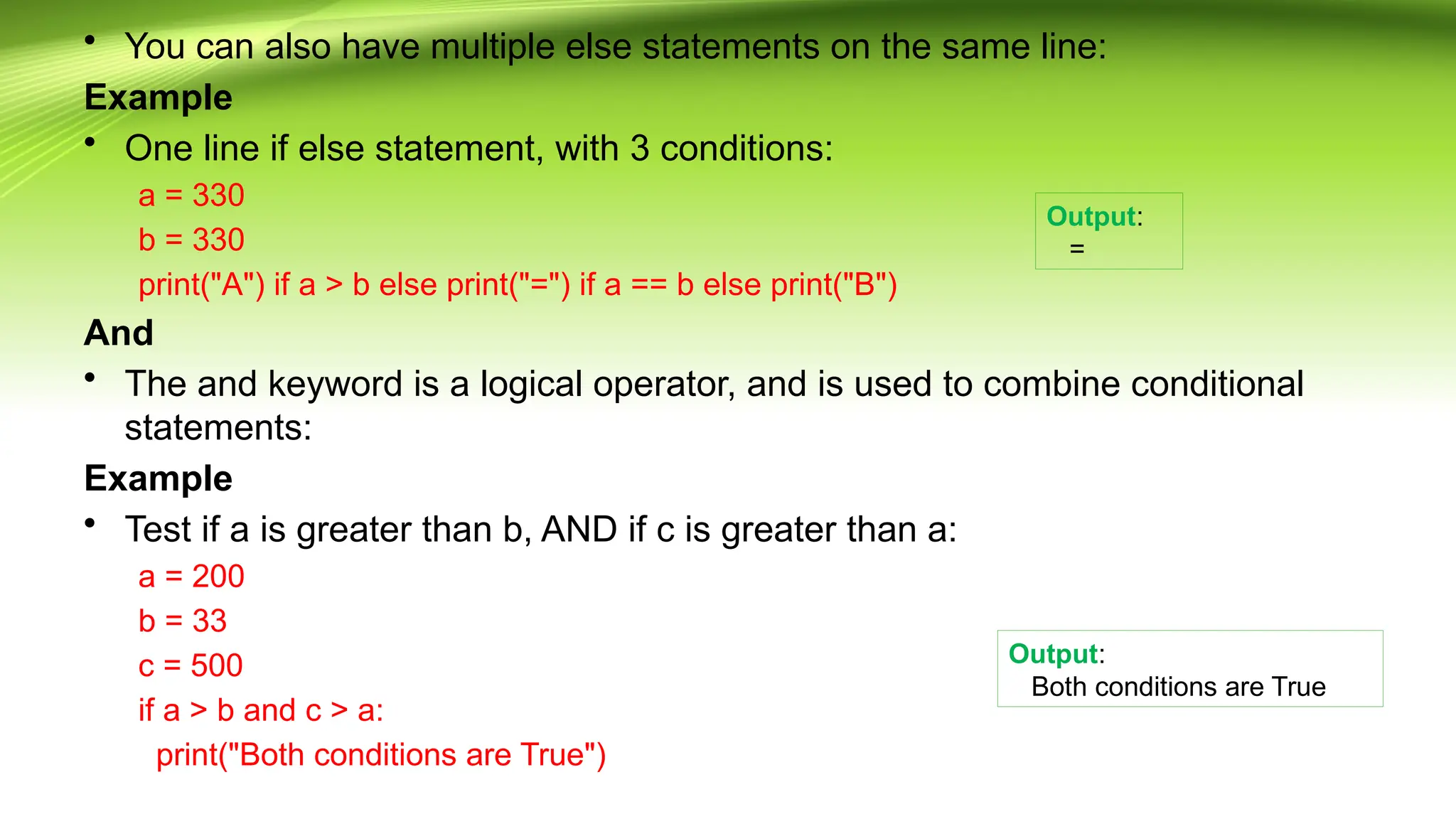
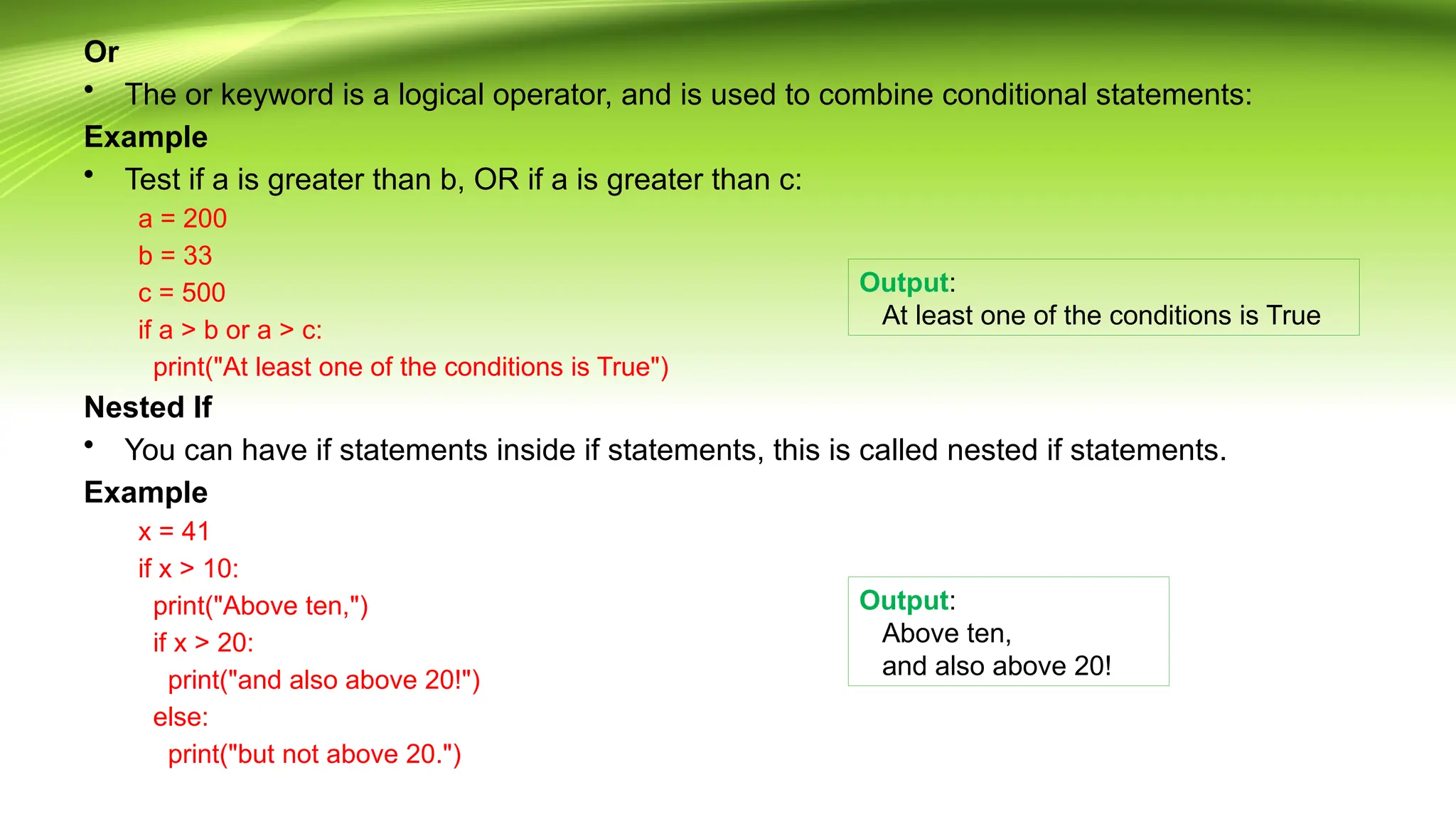
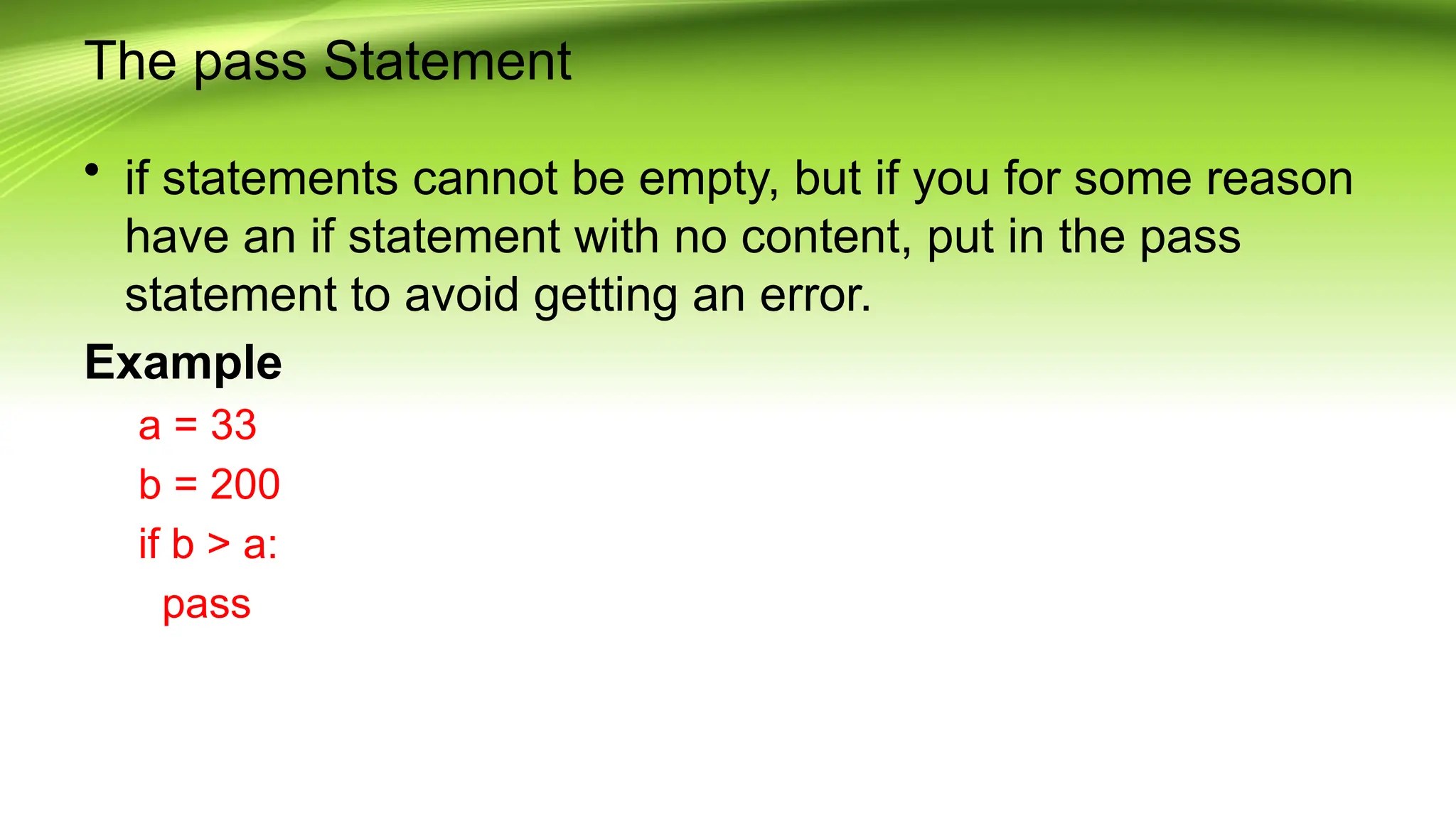
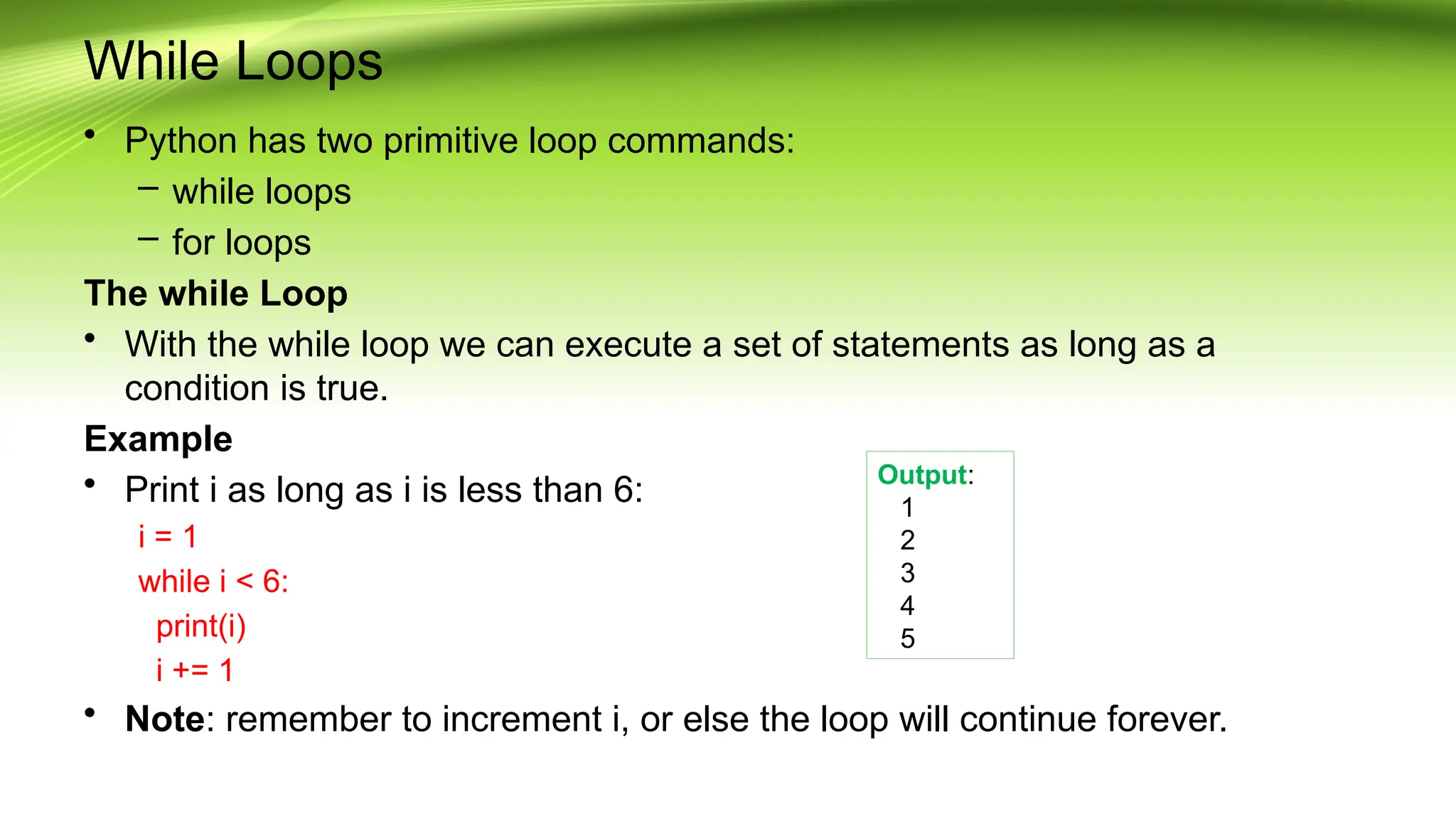
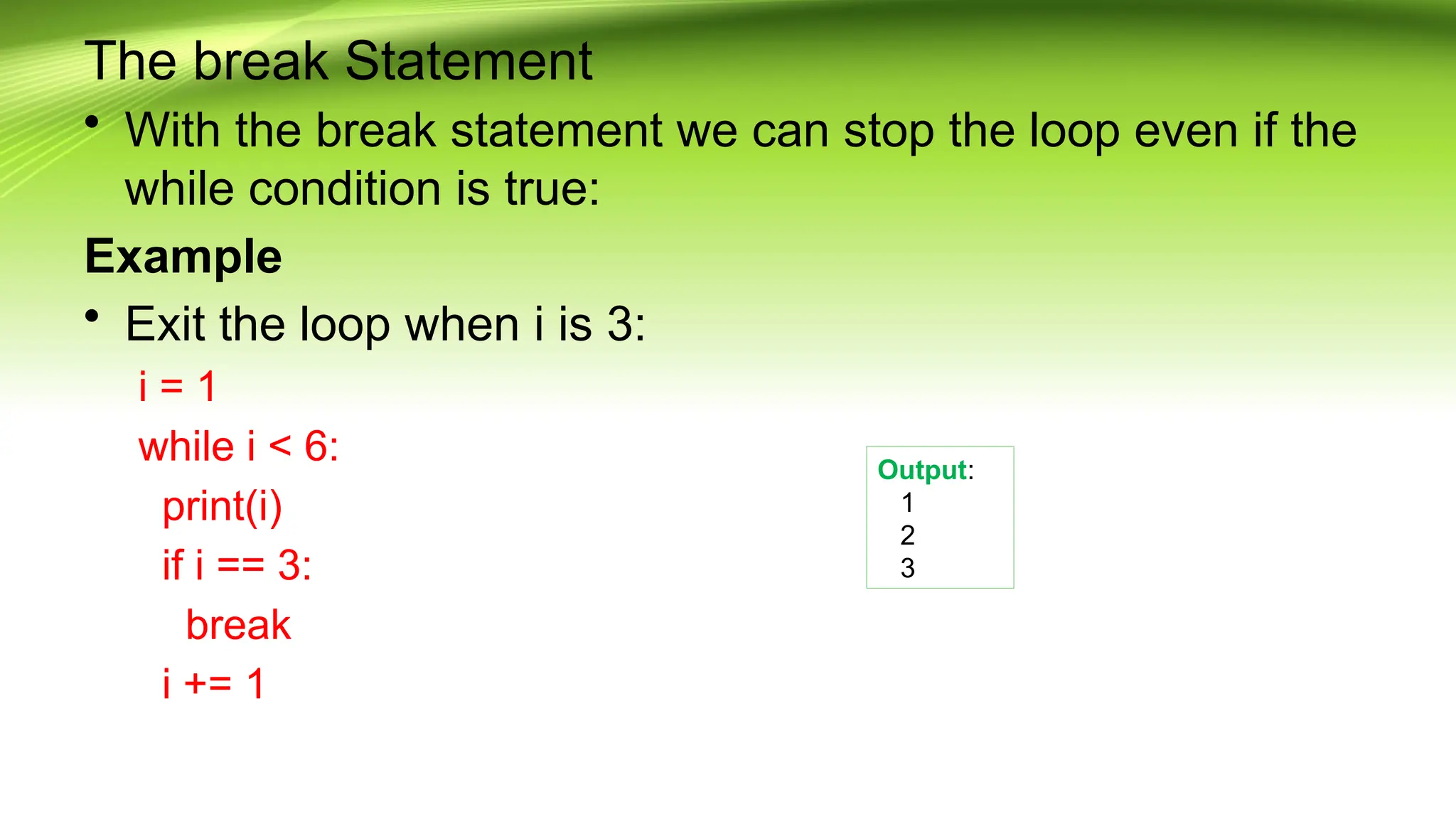
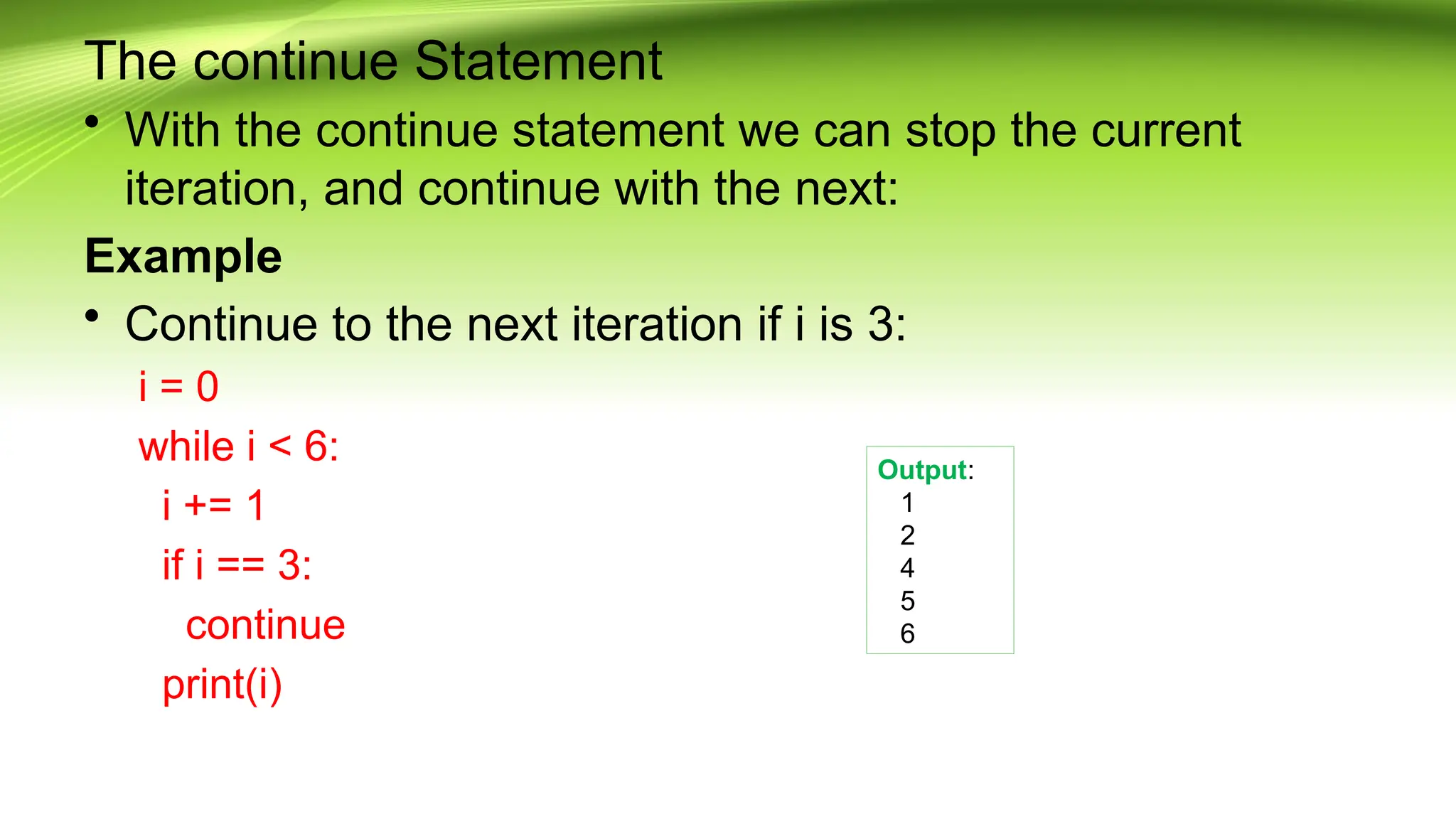
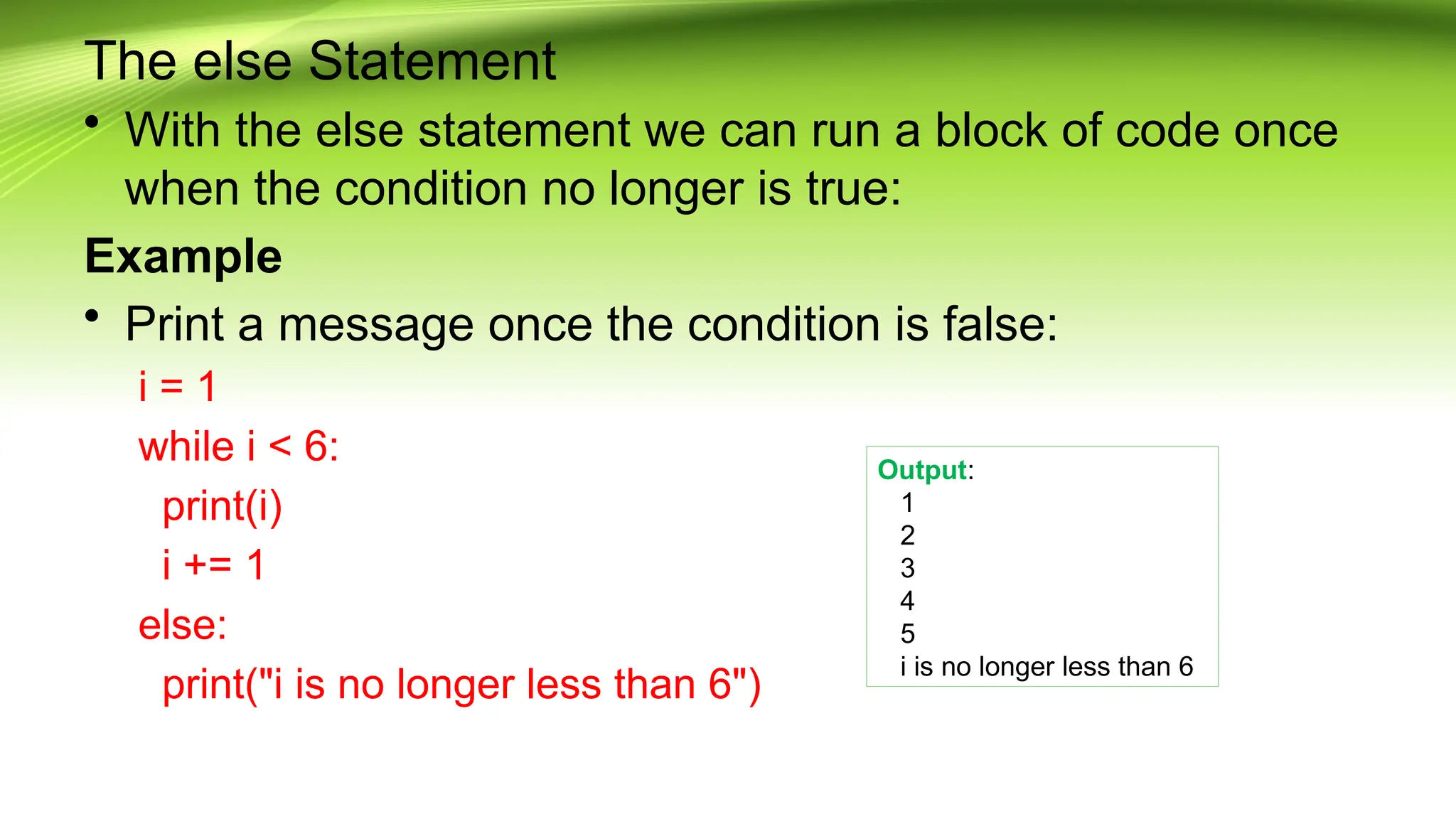
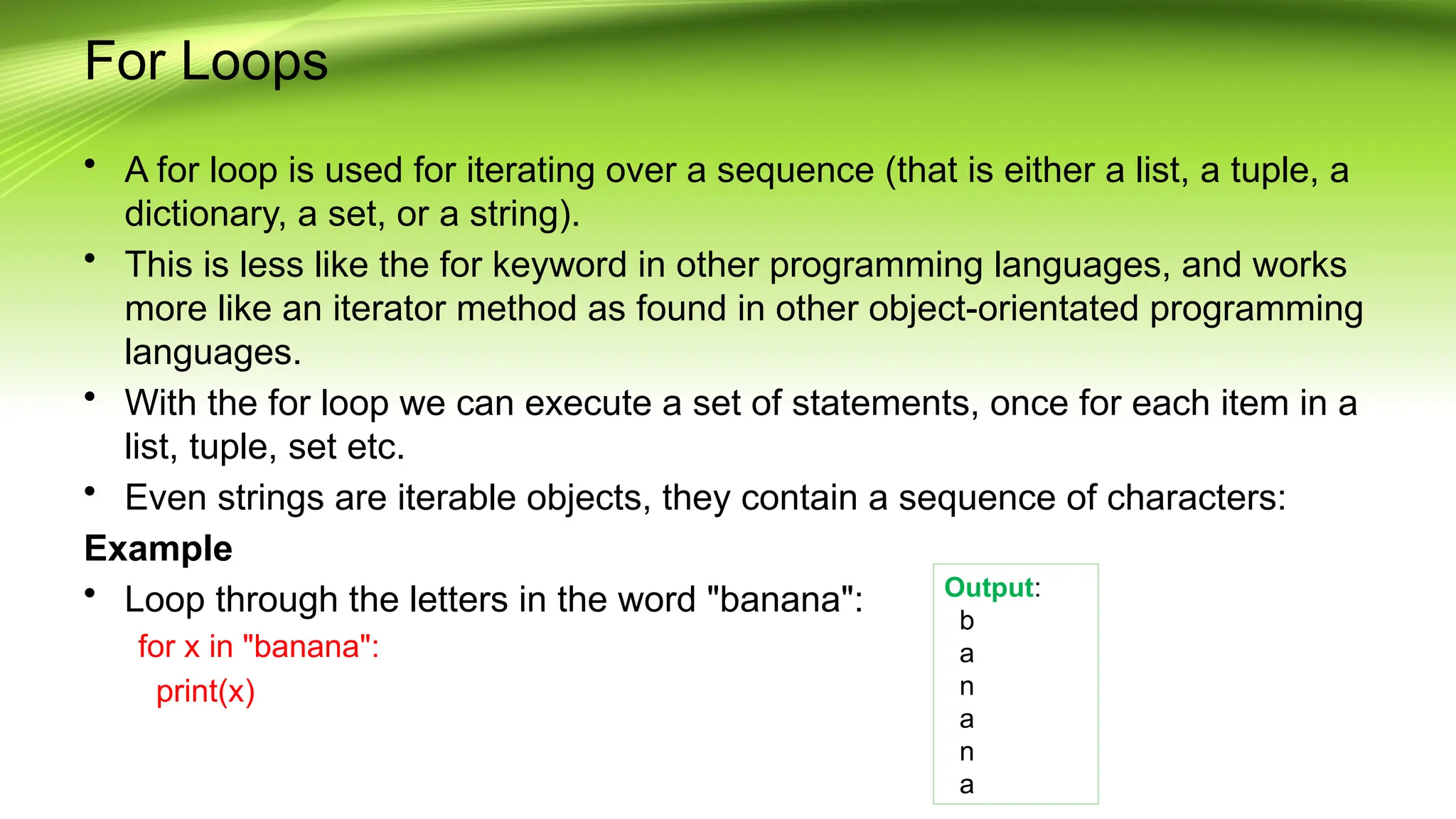
![Loop Lists
• You can loop through the list items by using a for loop:
Example
• Print all items in the list, one by one:
thislist = ["apple", "banana", "cherry"]
for x in thislist:
print(x)
Loop Through the Index Numbers
• You can also loop through the list items by referring to their index number.
• Use the range() and len() functions to create a suitable iterable.
Example
• Print all items by referring to their index number:
thislist = ["apple", "banana", "cherry"]
for i in range(len(thislist)):
print(thislist[i])
The iterable created in the example above is [0, 1, 2]
Output:
apple
banana
cherry
Output:
apple
banana
cherry](https://image.slidesharecdn.com/flowcontrol-241106100758-e57cd4d6/75/Python-Flow-Control-use-of-functions-pptx-15-2048.jpg)
![List Comprehension
• List comprehension offers a shorter syntax when you want to create a new list based on the
values of an existing list.
• Example: Based on a list of fruits, you want a new list, containing only the fruits with the
letter "a" in the name.
• Without list comprehension you will have to write a for statement with a conditional test
inside:
Example
fruits = ["apple", "banana", "cherry", "kiwi", "mango"]
newlist = []
for x in fruits:
if "a" in x:
newlist.append(x)
print(newlist)
With list comprehension you can do all that with only one line of code:
Example
fruits = ["apple", "banana", "cherry", "kiwi", "mango"]
newlist = [x for x in fruits if "a" in x]
print(newlist)
Output:
['apple', 'banana', 'mango']
Output:
['apple', 'banana', 'mango']](https://image.slidesharecdn.com/flowcontrol-241106100758-e57cd4d6/75/Python-Flow-Control-use-of-functions-pptx-16-2048.jpg)
![The Syntax
newlist = [expression for item in iterable if condition == True]
• The return value is a new list, leaving the old list unchanged.
Condition
• The condition is like a filter that only accepts the items that valuate to True.
Example
• Only accept items that are not "apple":
fruits = ["apple", "banana", "cherry", "kiwi", "mango"]
newlist = [x for x in fruits if x != "apple"]
print(newlist)
The condition if x != "apple" will return True for all elements other than "apple",
making the new list contain all fruits except "apple".
• The condition is optional and can be omitted:
Example
• With no if statement:
newlist = [x for x in fruits]
Output:
['banana', 'cherry', 'kiwi', 'mango']](https://image.slidesharecdn.com/flowcontrol-241106100758-e57cd4d6/75/Python-Flow-Control-use-of-functions-pptx-17-2048.jpg)
![Iterable
• The iterable can be any iterable object, like a list, tuple, set etc.
Example
• You can use the range() function to create an iterable:
newlist = [x for x in range(10)]
print(newlist)
• Same example, but with a condition:
Example
• Accept only numbers lower than 5:
newlist = [x for x in range(10) if x < 5]
print(newlist)
Expression
• The expression is the current item in the iteration, but it is also the outcome,
which you can manipulate before it ends up like a list item in the new list:
Output:
[0, 1, 2, 3, 4, 5, 6, 7, 8, 9]
Output:
[0, 1, 2, 3, 4]](https://image.slidesharecdn.com/flowcontrol-241106100758-e57cd4d6/75/Python-Flow-Control-use-of-functions-pptx-18-2048.jpg)
![Example
• Set the values in the new list to upper case:
fruits = ["apple", "banana", "cherry", "kiwi", "mango"]
newlist = [x.upper() for x in fruits]
print(newlist)
• You can set the outcome to whatever you like:
• Example
• Set all values in the new list to 'hello':
fruits = ["apple", "banana", "cherry", "kiwi", "mango"]
newlist = ['hello' for x in fruits]
print(newlist)
The expression can also contain conditions, not like a filter, but as a way to manipulate the outcome:
Example
• Return "orange" instead of "banana":
fruits = ["apple", "banana", "cherry", "kiwi", "mango"]
newlist = [x if x != "banana" else "orange" for x in fruits]
print(newlist)
The expression in the example above says:
• "Return the item if it is not banana, if it is banana return orange".
Output:
['APPLE', 'BANANA', 'CHERRY', 'KIWI', 'MANGO']
Output:
['hello', 'hello', 'hello', 'hello', 'hello']
Output:
['apple', 'orange', 'cherry', 'kiwi', 'mango']](https://image.slidesharecdn.com/flowcontrol-241106100758-e57cd4d6/75/Python-Flow-Control-use-of-functions-pptx-19-2048.jpg)
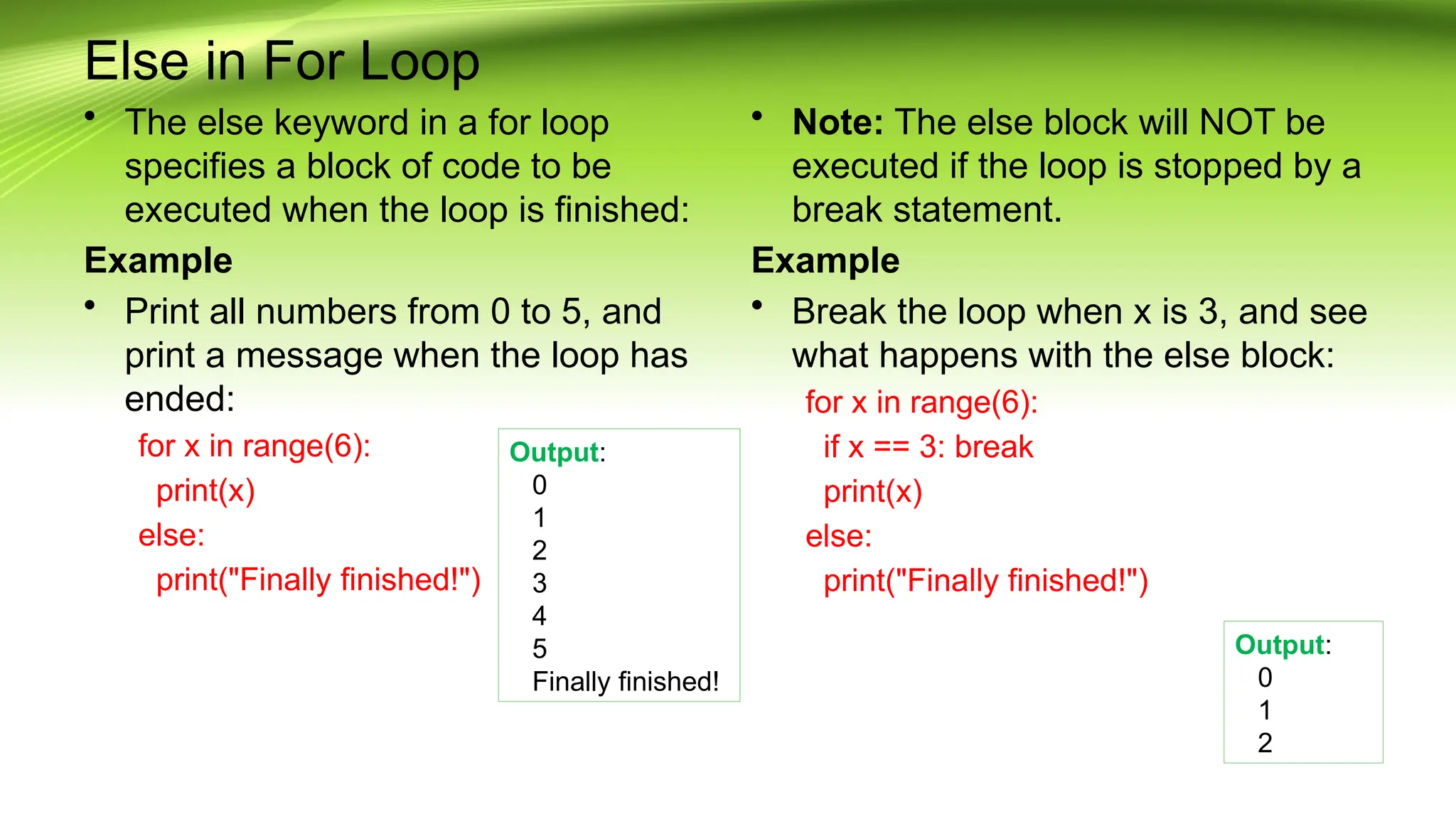
![Nested Loops
• A nested loop is a loop inside a loop.
• The "inner loop" will be executed one time for each iteration of the "outer loop":
Example
• Print each adjective for every fruit:
adj = ["red", "big", "tasty"]
fruits = ["apple", "banana", "cherry"]
for x in adj:
for y in fruits:
print(x, y)
The pass Statement
• for loops cannot be empty, but if you for some reason have a for loop with no
content, put in the pass statement to avoid getting an error.
Example
for x in [0, 1, 2]:
pass
Output:
red apple
red banana
red cherry
big apple
big banana
big cherry
tasty apple
tasty banana
tasty cherry](https://image.slidesharecdn.com/flowcontrol-241106100758-e57cd4d6/75/Python-Flow-Control-use-of-functions-pptx-21-2048.jpg)
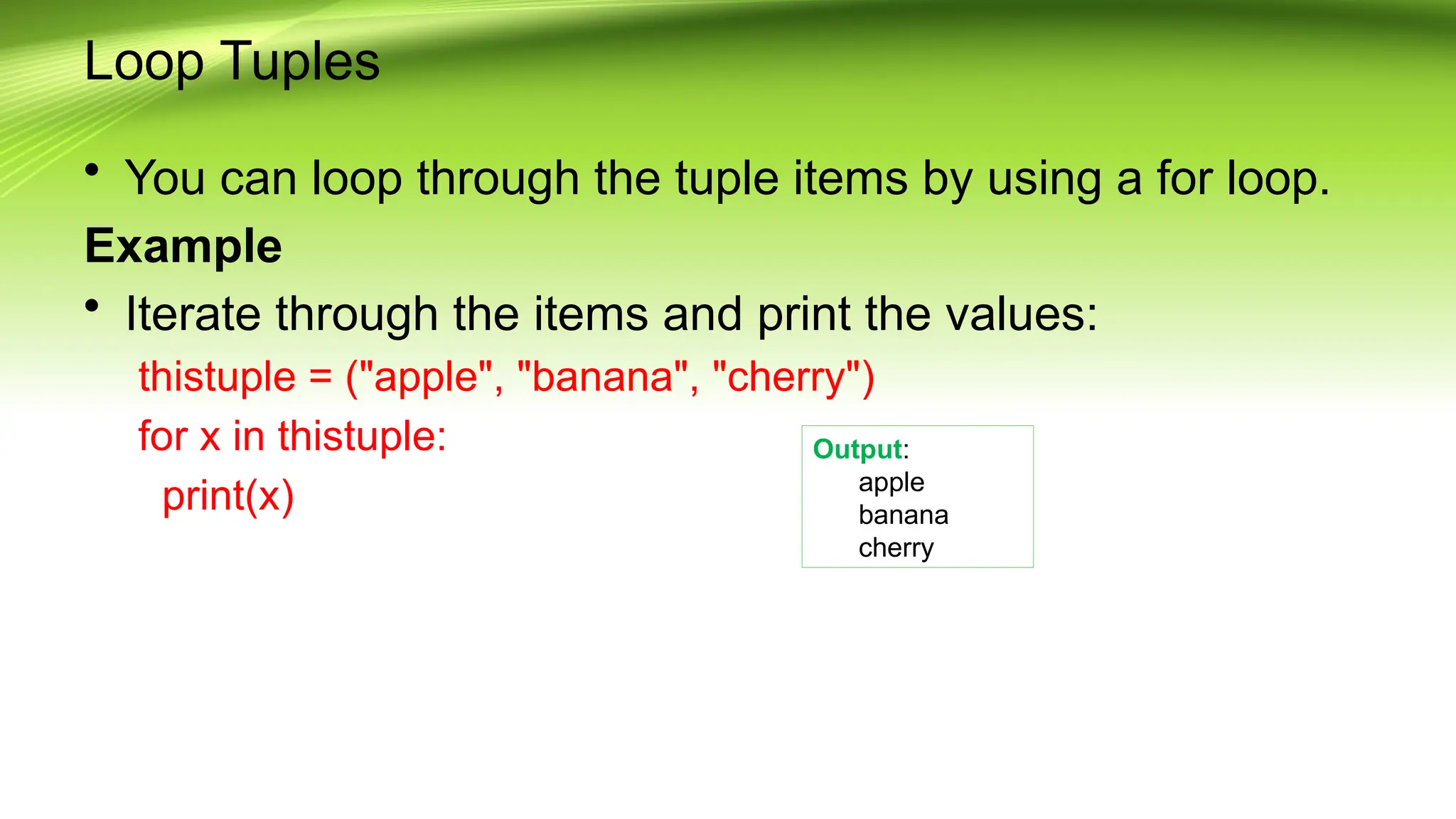
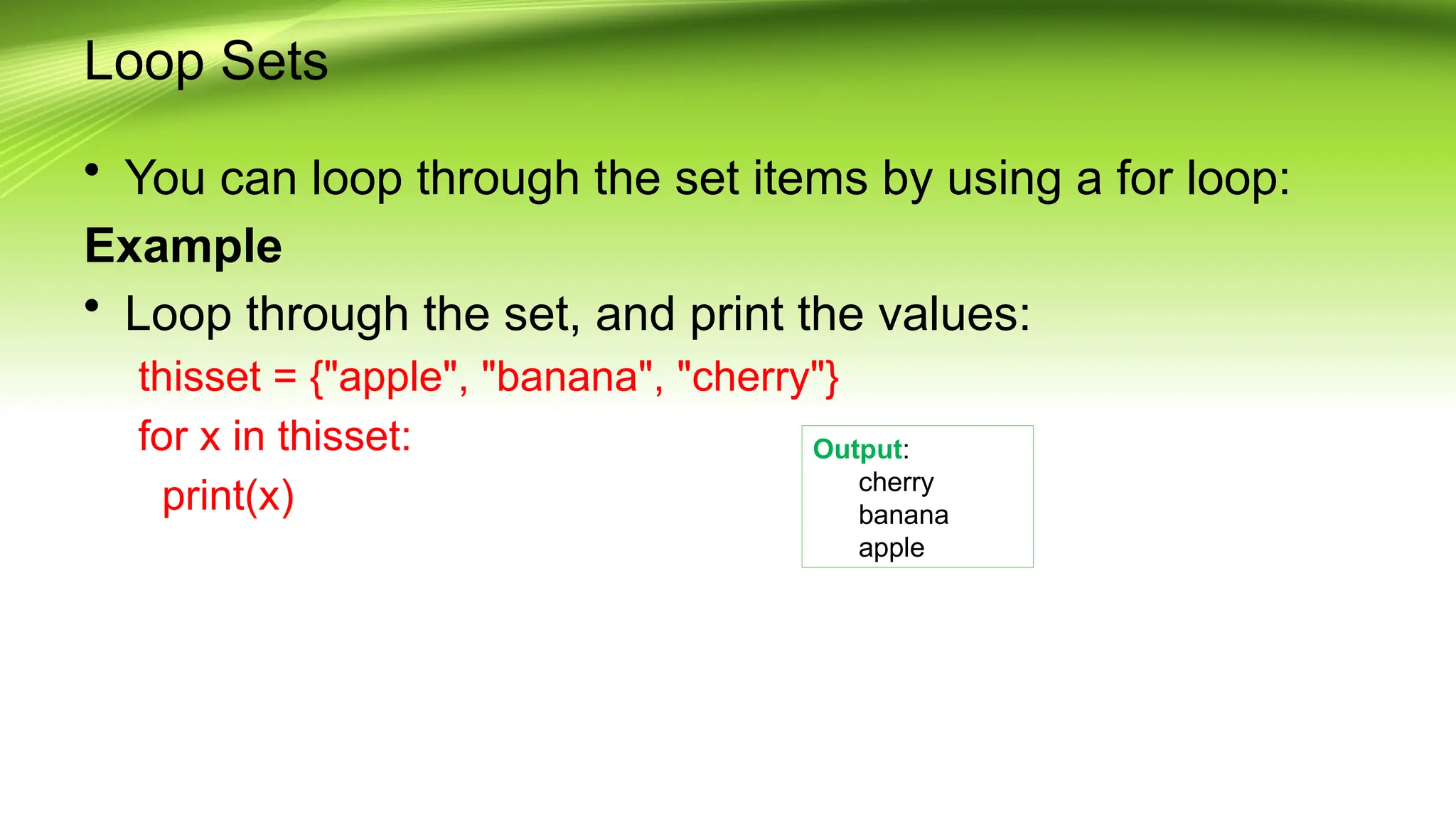
![Loop Dictionaries
• You can loop through a dictionary by
using a for loop.
• When looping through a dictionary, the
return value are the keys of the
dictionary, but there are methods to
return the values as well.
Example
• Print all key names in the dictionary,
one by one:
thisdict = {
"brand": "Ford",
"model": "Mustang",
"year": 1964
}
for x in thisdict:
print(x)
Example
• Print all values in the dictionary, one
by one:
thisdict = {
"brand": "Ford",
"model": "Mustang",
"year": 1964
}
for x in thisdict:
print(thisdict[x])
Output:
brand
model
year
Output:
Ford
Mustang
1964](https://image.slidesharecdn.com/flowcontrol-241106100758-e57cd4d6/75/Python-Flow-Control-use-of-functions-pptx-24-2048.jpg)
